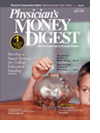Teach Your Kids Priceless Money Lessons
While it's easy for most parentsto recognize the importanceof teaching our children thedifference between right and wrong,teaching them about the importance ofpersonal finance is one of the lessonsmost often overlooked.
Fiscal Education
Just as adults have been hidden fromthe true cost of medical care and prescriptionmedication thanks to insurancecopays, children do not fully understandthe value of money unless it comes intoand flows out of their own pockets.
Wall Street Journal
Consider an experience of JonathanClements, a respected columnist and author. As an acknowledgedmoney authority, Clements felt anespecially strong need to teach his 11-year-old son and 15-year-old daughterabout the value of money. His firstattempt was to open the Bank of Dad, acombination of a spiral notebook tokeep track of his children's savings andhis wallet for shelling out withdrawalsand accepting deposits. It was not verywarmly received by the kids.
His second attempt fared much better.He opened real savings accounts forboth children, complete with monthlystatements and a no-fee automatedteller machine (ATM) card. The impact,Clements writes, has been astonishing.His children have become more consciousof their spending habits. Whenasked why, his daughter explained thatwith the real savings accounts, themoney feels like it belongs to them.
Credit Classes
AAIIJournal
According to a recent article in , 90% of college students havecredit cards by the time they reach theirsophomore year. The danger here, thearticle points out, is that credit card debtis now recognized as contributing to thecollege dropout rate. The average creditcard debt for graduating seniors is inexcess of $2000.
Instead of waiting until your childbegins attending college, consider gettinga credit card in their name once they turn16, with you as the guarantor. Once theyturn 18, consider a low-limit card thatyour child will be responsible for. Teachthem early about the importance of makingsmall charges regularly, and then payingoff the charges in full each month.
AAII
In addition, your child can open uptheir own checking and savings accountsupon reaching age 18. The article suggestsaccompanying them to the bank andreviewing best practices for trackingdeposits and withdrawals. Talk to themabout safe ATM machine habits and helpthem understand that an account doesn'texist solely for extracting money—itaccepts deposits as well. Get them in thehabit of putting a certain percentage(eg, 10% or 20%) of every dollar earned orreceived into their savings account. Oncethey experience how rapidly their accountwill grow when money is deposited on aregular basis, they might think twice abouta purchase that would require a withdrawalof those funds.
AAII
The article also suggests that onceyour child has earned income (ie, incomereported on a W2 form at the end of theyear) you might want to talk to themabout opening a Roth IRA account.
In addition to being a powerful savingstool, the article points out thatthere is no IRS restriction on parents orgrandparents funding part of theaccount. As such, you might want toagree with your child that you will matchtheir annual contribution up to the maximumallowed by the IRS. The opportunityto double their money is often a positiveincentive for saving.
